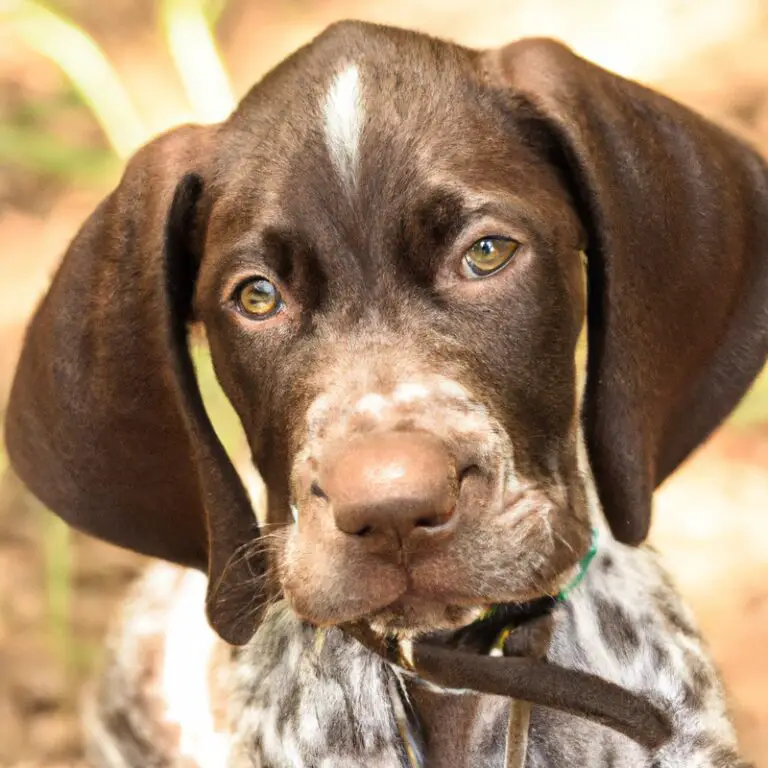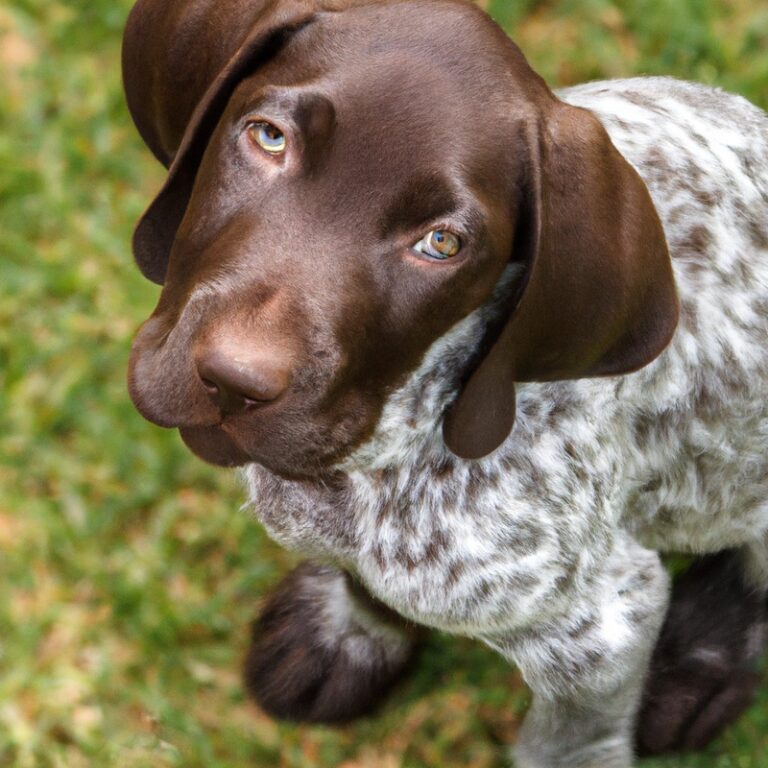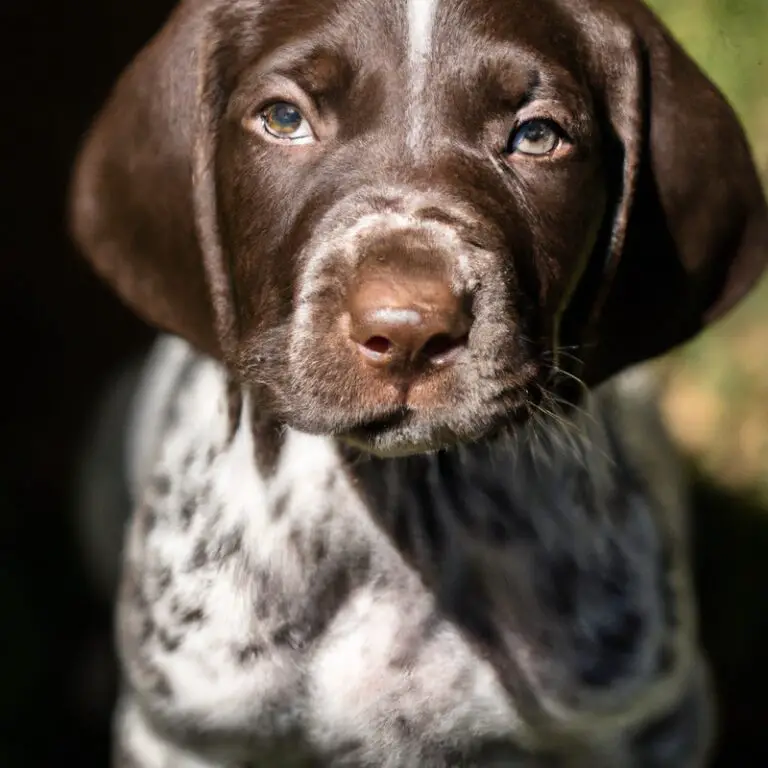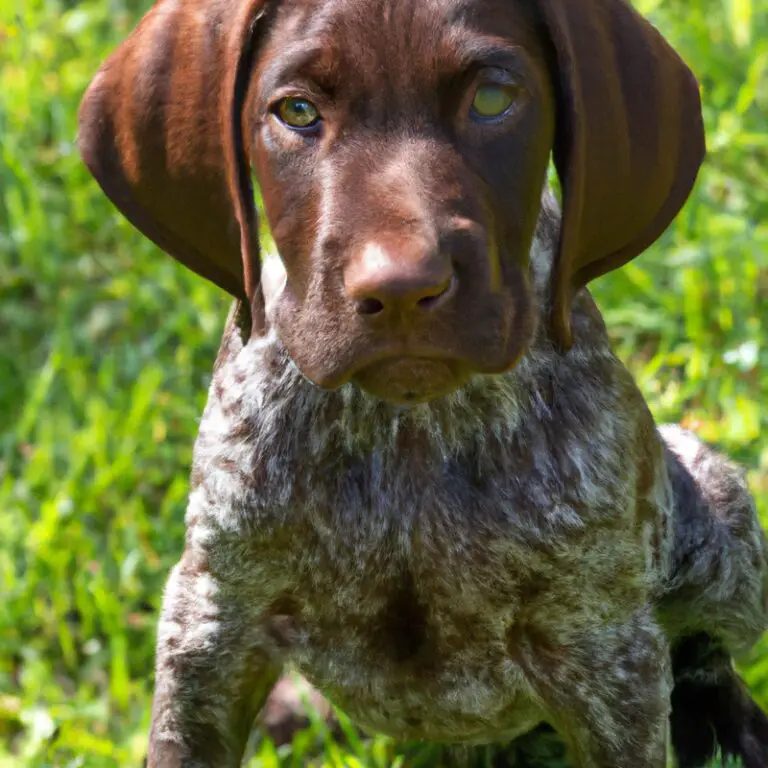What Are The Signs Of a German Shorthaired Pointer Being Fearful Or Aggressive Towards Other Dogs?
Key Takeaways:
- Body language cues include raised hackles, tail tucked between legs, and a tense posture.
- Fearful or aggressive German Shorthaired Pointers may exhibit growling, barking, or lunging towards other dogs.
- Separation or isolation from other dogs may be a common behavior in fearful or aggressive German Shorthaired Pointers.
- Seek professional help if your German Shorthaired Pointer displays consistent signs of fear or aggression towards other dogs.
Have you ever wondered what your German Shorthaired Pointer is trying to communicate when they show signs of fear or aggression towards other dogs? As a dog lover and expert, I can assure you that understanding the behavior of your furry friend is crucial in creating a safe and harmonious environment.
In this blog article, I will shed light on the key traits and characteristics of German Shorthaired Pointers, as well as the specific behaviors they display when fearful or aggressive.
Additionally, we will explore the possible causes behind these behaviors and offer practical tips on how to deal with and prevent fear and aggression in your beloved pet. So, grab a treat and let’s dive in!
| Signs of Fearful Behavior: | Signs of Aggressive Behavior: |
|
|
Understanding German Shorthaired Pointers and Their Behavior
Overview of the German Shorthaired Pointer breed
The German Shorthaired Pointer is a versatile and energetic breed known for its hunting abilities and athletic prowess. They are medium-sized dogs with a sleek and muscular build.
German Shorthaired Pointers have a short coat that comes in various colors, such as liver, liver and white, or black and white.
These dogs are intelligent and highly trainable, making them excellent companions for active individuals or families. They have a friendly and affectionate nature, getting along well with people and other pets.
However, they do require ample exercise and mental stimulation to prevent boredom and behavioral issues.
Because of their hunting background, German Shorthaired Pointers may have a strong prey drive and can be prone to chasing small animals. It’s important to provide them with proper training and socialization from a young age to prevent any potential aggression or dominance issues.
Key traits and characteristics of German Shorthaired Pointers
German Shorthaired Pointers have several key traits and characteristics that set them apart. First and foremost, they are highly energetic and require regular exercise to stay happy and healthy.
They thrive in active households and enjoy running, swimming, and playing fetch.
These dogs are also highly intelligent and trainable. They are quick learners and are eager to please their owners.
This makes them excellent candidates for obedience training and various dog sports.
German Shorthaired Pointers are known for their friendly and affectionate nature. They are typically good with children and get along well with other dogs when properly socialized from a young age.
They have a strong prey drive, which can make them prone to chasing small animals.
It’s important to keep them on a leash or in a securely fenced area to prevent them from running off. With their sleek and athletic build, German Shorthaired Pointers excel in activities like hunting, agility, and endurance trials.
They have an instinctual desire to work and excel in tasks that engage both their physical and mental abilities.

Signs of Fear and Aggression in German Shorthaired Pointers
Recognizing fear in German Shorthaired Pointers
First and foremost, it’s important to be able to recognize signs of fear in your German Shorthaired Pointer. These signs can include trembling, tail tucking, cowering, and avoiding eye contact.
Your dog may also display defensive behaviors such as growling, barking, or snapping when feeling fearful.
Pay attention to their body language, as a tucked tail, lowered head, and flattened ears can all indicate fear.
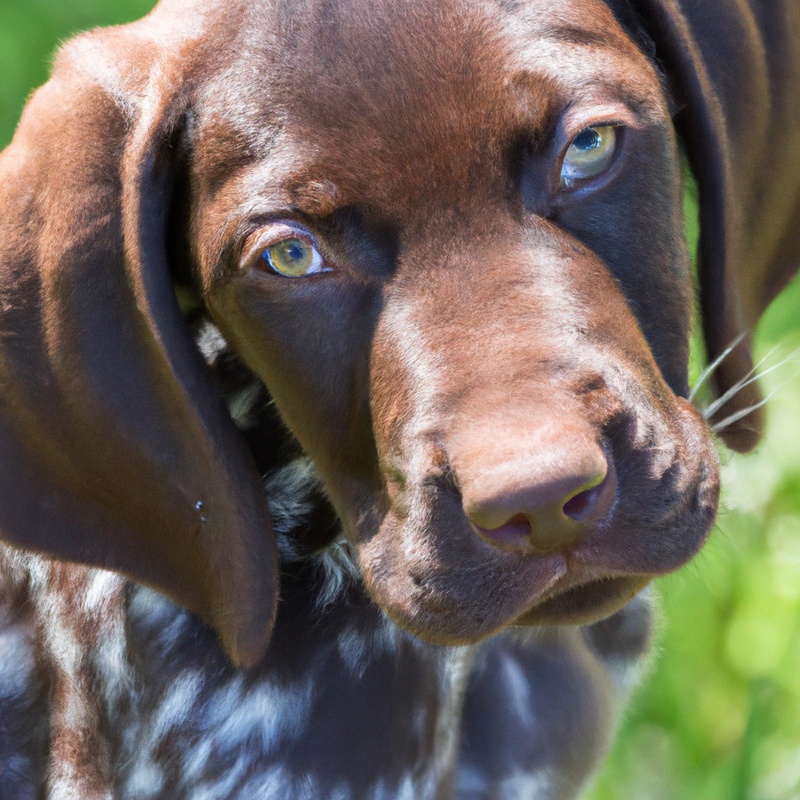
Identifying signs of aggression in German Shorthaired Pointers
Identifying signs of aggression in German Shorthaired Pointers is important for both their safety and the safety of other dogs. One key sign to look out for is intense staring, where their gaze becomes fixated and unwavering.
Raised hackles, or the hair along their back standing up, is another indicator.
Growling and snarling are obvious signs of aggression, but also watch for a stiff posture and raised tail. Lunging or snapping towards other dogs is a more overt display of aggression.
If you notice any of these signs, it’s best to give them space and remove them from the situation to prevent any potential altercations.
Specific behaviors German Shorthaired Pointers display when fearful or aggressive towards other dogs
Specific behaviors German Shorthaired Pointers may display when fearful or aggressive towards other dogs include:
- Growling or snarling
- Barking excessively
- Baring teeth or showing aggression in body language, such as raised hackles or a stiff posture
- Lunging or charging towards the other dog
- Stiffening or freezing in place
- Intense staring or locking eyes with the other dog
- Attempting to escape or hide behind their owner
- Displaying submissive behavior, such as rolling over onto their back
- Acting defensively or protective over their territory or resources.

Causes of Fear and Aggression in German Shorthaired Pointers
Genetics and breed predisposition
Genetics plays a significant role in determining a dog’s behavior, including fear and aggression. German Shorthaired Pointers, like any other breed, can have genetic predispositions towards certain behaviors.
It means that some pointers may be more prone to fear or aggression than others.
Breeders often strive to produce German Shorthaired Pointers with good temperaments, but genetics cannot be ignored. The traits of fear or aggression may be passed down from generation to generation.
It’s important to understand that genetics alone do not determine a dog’s behavior.
Environmental factors, socialization, training, and individual experiences also play a crucial role. But acknowledging the potential genetic predisposition can help owners and breeders make informed decisions and take appropriate steps to manage or modify a dog’s behavior.
Lack of socialization and past experiences
Here’s something you should know about German Shorthaired Pointers and their behavior. Lack of socialization and past experiences can play a big role in their fear or aggression towards other dogs.
If a German Shorthaired Pointer hasn’t been properly socialized from a young age, they may feel unsure or scared when encountering other dogs.
This lack of socialization can make them feel overwhelmed and lead to defensive or aggressive behavior. Furthermore, past negative experiences can leave a lasting impact on a German Shorthaired Pointer.
If they have been involved in fights or had traumatic encounters with other dogs, they may develop fear or aggression as a way to protect themselves.
It’s really important to consider these factors when understanding a German Shorthaired Pointer’s behavior. By providing proper socialization and positive experiences from an early age, and by addressing any past negative experiences through training and patience, it is possible to help them become more comfortable and relaxed around other dogs.
Fear or anxiety triggers in German Shorthaired Pointers
Fear or anxiety triggers in German Shorthaired Pointers can vary from dog to dog, but there are a few common factors to look out for. One major trigger is lack of socialization during their critical developmental period, usually between 3 to 12 weeks of age.
This can lead to fear or anxiety towards unfamiliar dogs or situations.
Past traumatic experiences, such as a negative encounter with an aggressive dog, can also trigger fear or aggression in German Shorthaired Pointers. Additionally, changes in their environment, such as moving to a new home or being introduced to new people or animals, can cause anxiety and fear.
Another trigger is genetic predisposition.
Some German Shorthaired Pointers may have a more anxious or fearful temperament due to their genetic makeup. This doesn’t mean all dogs with this breed are anxious, but it’s something to be aware of.
Lastly, any kind of pain or discomfort can trigger fear or aggression in German Shorthaired Pointers.
It’s important to address any health issues promptly and provide them with a comfortable and safe environment. Understanding these triggers can help you better manage and address fear or anxiety in German Shorthaired Pointers, ensuring their well-being and a harmonious living environment.
Dealing with Fear and Aggression in German Shorthaired Pointers
Training and behavior modification techniques
Training and behavior modification techniques are essential when dealing with fear and aggression in German Shorthaired Pointers. Here are some effective methods to address these issues:
- Positive Reinforcement: Use rewards, such as treats or praise, to encourage desired behavior. When your German Shorthaired Pointer displays calm and friendly behavior towards other dogs, reward them immediately.
- Socialization: It’s important to expose your dog to various environments, people, and other dogs from an early age. Gradual and positive introductions can help your dog feel more comfortable and less fearful or aggressive towards other dogs.
- Counter Conditioning: This technique involves associating something positive with the presence of other dogs. For example, give your dog treats or praise when another dog is nearby, gradually increasing the proximity over time.
- Desensitization: Gradually expose your dog to the triggers that cause fear or aggression, such as other dogs, in a controlled and safe environment. Start at a distance where your dog remains calm and gradually decrease the distance as they become more comfortable.
- Consult a Professional: If your German Shorthaired Pointer’s fear or aggression is severe or persists despite your efforts, seeking advice from a professional dog trainer or behaviorist can be invaluable. They can provide personalized guidance and techniques to address your specific situation.
Seeking professional help for fearful or aggressive behavior
Seeking professional help for fearful or aggressive behavior in your German Shorthaired Pointer is an important step to ensure the well-being of your dog and the safety of others. A professional dog trainer or behaviorist can provide valuable insight and guidance to address these issues effectively.
They have the expertise to assess the underlying causes and develop a tailored training program to modify your dog’s behavior.
Creating a safe and positive environment for your German Shorthaired Pointer
Creating a safe and positive environment for your German Shorthaired Pointer is essential for their well-being and behavior. First and foremost, make sure your home is secure, with sturdy fences or gates to prevent your dog from running off or encountering potential dangers.
Inside the house, designate a comfortable and cozy space for your German Shorthaired Pointer to relax and rest.
Provide them with a soft bed or blanket, toys, and access to water. Creating a quiet area away from excessive noise or foot traffic can help reduce stress and promote a positive atmosphere.
Consistent and positive training is crucial for your German Shorthaired Pointer’s behavior and overall happiness.
This breed thrives on mental and physical stimulation, so engage in regular exercise and play sessions. This will help prevent boredom and reduce the likelihood of destructive behaviors.
Socialization is also key to creating a safe environment for your dog.
Expose them to a variety of people, animals, and environments from an early age, ensuring positive experiences. This will help them become well-adjusted and friendly towards others.
Finally, always prioritize your German Shorthaired Pointer’s health and well-being.
Regular veterinary check-ups, a nutritious diet, and plenty of love and attention will contribute to a happy and safe environment for your beloved pet.
Preventing Fear and Aggression in German Shorthaired Pointers
Early socialization and exposure to other dogs
Early socialization and exposure to other dogs is vital for German Shorthaired Pointers. It helps them develop positive behaviors and attitudes towards other canines.
By introducing your puppy to other dogs from a young age, you can reduce the chances of fear and aggression towards fellow dogs in adulthood.
When socializing your German Shorthaired Pointer, prioritize positive experiences. Encourage gentle play and interactions with well-behaved dogs.
Expose your puppy to various environments and situations, such as dog parks, walks, and playdates with trusted dog owners.
Remember to supervise these interactions closely and intervene if any negative behaviors arise. Gradually increase the difficulty level by exposing your dog to different sizes, breeds, and energy levels of dogs.
Proper training and obedience classes
Proper training and obedience classes play a vital role in preventing fear and aggression in German Shorthaired Pointers. By providing structured training and socialization, these classes help German Shorthaired Pointers develop good behavior and manners around other dogs.
They learn to follow commands, understand boundaries, and control their impulses.
Obedience classes also teach owners how to effectively communicate with their dogs and handle challenging situations. With consistent training and positive reinforcement, German Shorthaired Pointers can become well-behaved and confident companions.
So, consider enrolling your pup in obedience classes to give them the best start in life.
Understanding and managing triggers for fear and aggression
Understanding and managing triggers for fear and aggression in German Shorthaired Pointers is vital for maintaining a happy and well-behaved dog. One of the key steps is to identify the triggers that cause fear or aggression in your dog.
These triggers can vary from dog to dog, but common ones include unfamiliar dogs, loud noises, and certain environments.
Once you have identified the triggers, it’s important to provide a safe and controlled environment for your dog. Avoid exposing them to situations that trigger fear or aggression whenever possible.
Gradual exposure under controlled conditions can also help your dog become more comfortable over time.
Positive reinforcement training techniques can be highly effective in managing fear and aggression. Reward your dog for calm behavior and gradually expose them to the triggers in a positive and controlled manner.
This helps build confidence and create positive associations with previously fearful or aggressive situations.
Working with a professional trainer or behaviorist can provide valuable guidance and support in managing triggers for fear and aggression. They can help assess your dog’s behavior, provide training techniques tailored to your specific dog, and offer ongoing support and guidance.
Final Verdict
Understanding the signs of fear and aggression in German Shorthaired Pointers is essential for responsible dog owners. By recognizing these behaviors, we can better address the underlying causes and implement appropriate training and behavior modification techniques.
Seeking professional help when needed and creating a safe, positive environment are crucial for managing fear and aggression in this breed.
By focusing on prevention through early socialization and proper training, we can ensure a happy and well-adjusted German Shorthaired Pointer. Trust in the knowledge and experience shared here to build a strong foundation of understanding and care for your beloved pet.




